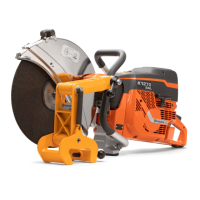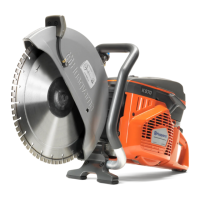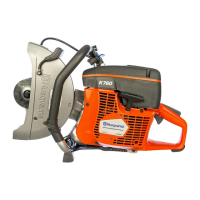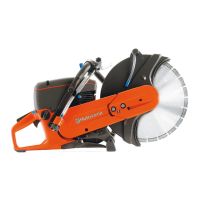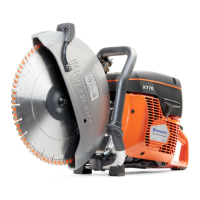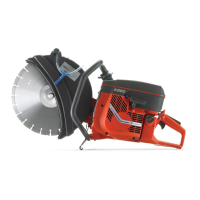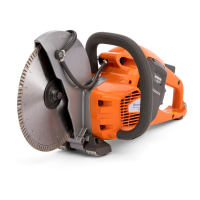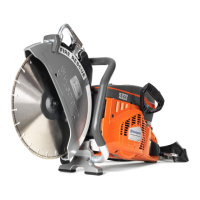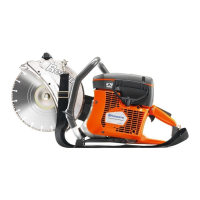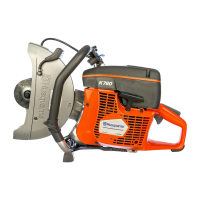10 – English
CUTTING BLADES
• Ensure the blade it not cracked or damaged in any other
way.
• Test the abrasive blade by hanging it on your finger and
tapping it lightly with a screwdriver or the like. If the blade
does not produce a resonant, ringing sound it is damaged.
Abrasive blades for different materials
Rail cutting
Only use specially intended cutting blades for rail cutting.
Diamond blades
General
• Diamond blades consist of a steel core provided with
segments that contain industrial diamonds.
• Diamond blades ensure lower costs per cutting operation,
fewer blade changes and a constant cutting depth.
• When using diamond blades make sure that it rotates in
the direction indicated by the arrow on the blade.
Diamond blades for different materials
• Diamond blades are ideal for masonry, reinforced
concrete and other composite materials.
• Diamond blades are available in several hardness
classes.
• Special blades should be used when cutting metal. Ask
your dealer for help in choosing the right product.
Sharpening diamond blades
• Always use a sharp diamond blade.
• Diamond blades can become dull when the wrong feeding
pressure is used or when cutting certain materials such as
heavily reinforced concrete. Working with a blunt diamond
blade causes overheating, which can result in the
diamond segments coming loose.
• Sharpen the blade by cutting in a soft material such as
sandstone or brick.
Diamond blades for dry cutting
• Diamond blades for dry cutting can be used both with and
without water cooling.
• When dry cutting, lift the blade out from the cut every 30–
60 seconds and let it rotate in the air for 10 seconds to let
it cool. If this is not done, the blade may be overheated.
Diamond blades for wet cutting
• Diamond blades for wet cutting must be water cooled. If
this is not done, the blade may be overheated.
• Water cooling cools the blade and increases its service
life while also reducing the formation of dust.
Transport and storage
• Do not store or transport the power cutter with the cutting
blade fitted. All blades should be removed from the cutter
after use and stored carefully.
• Store cutting blades in dry, frost free conditions. Special
care should be taken with abrasive blades. Abrasive
blades must be stored on a flat, level surface. If an
abrasive blades is stored in humid conditions, this can
cause imbalance and result in injury.
• Inspect new blades for transport or storage damage.
Blade type Material
Concrete blade
Concrete, asphalt, stone masonry,
cast iron, aluminium, copper,
brass, cables, rubber, plastic, etc.
Metal blade
Steel, steel alloys and other hard
metals.
Blade for rail
cutting
Rail
!
WARNING! Cutting plastics with a diamond
blade can cause kickback when the material
melts due to the heat produced when cutting
and sticks to the blade.
Diamond blades get very hot when used. An
overheated blade is a result of improper use,
and may cause deformation of the blade,
resulting in damage and injuries.
Cutting in metal generates sparks that may
cause fire. Do not use the machine near to
ignitable substances or gases.
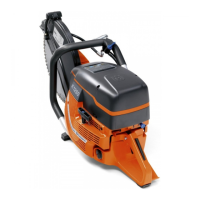
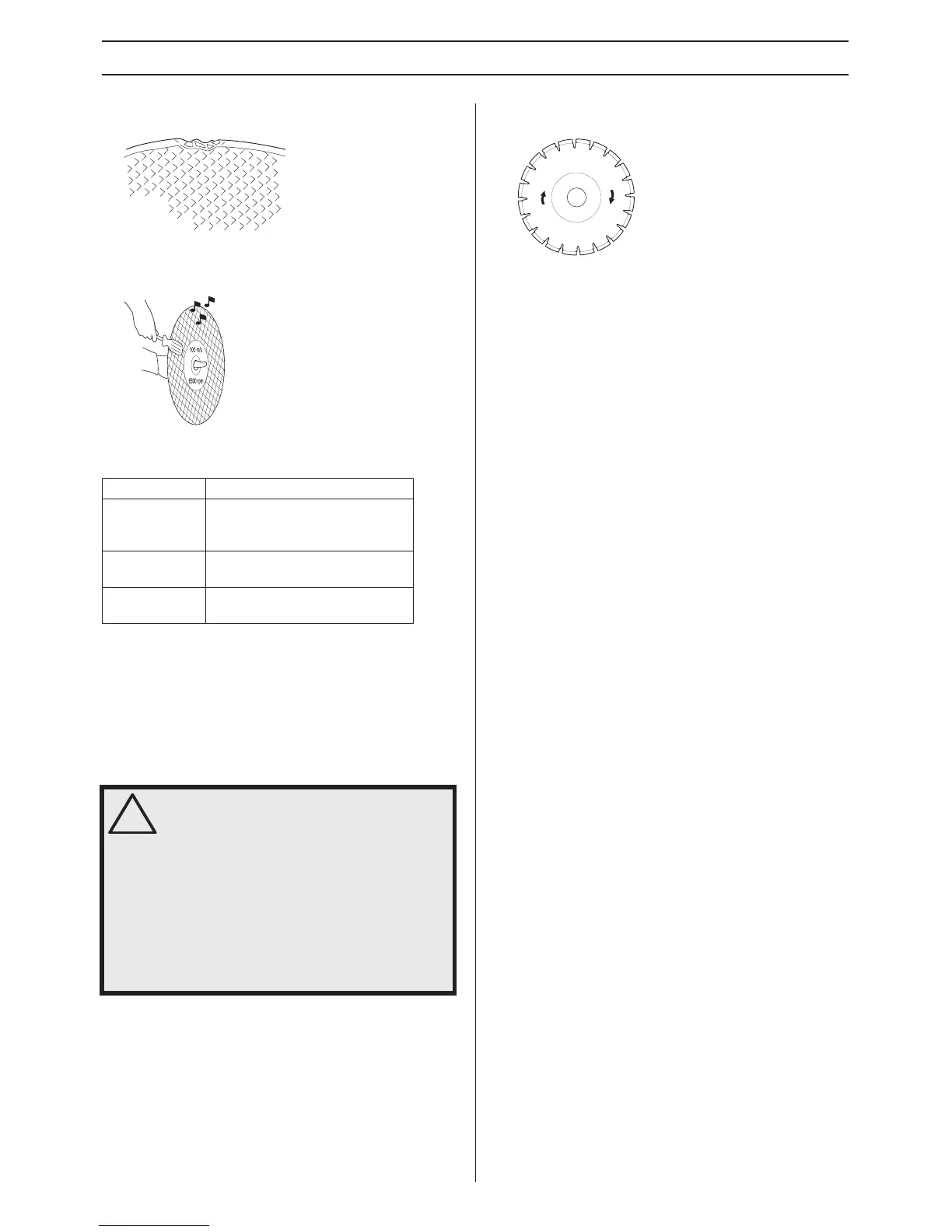